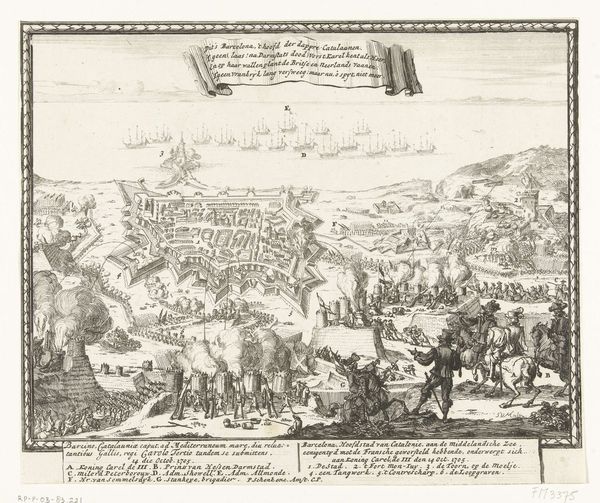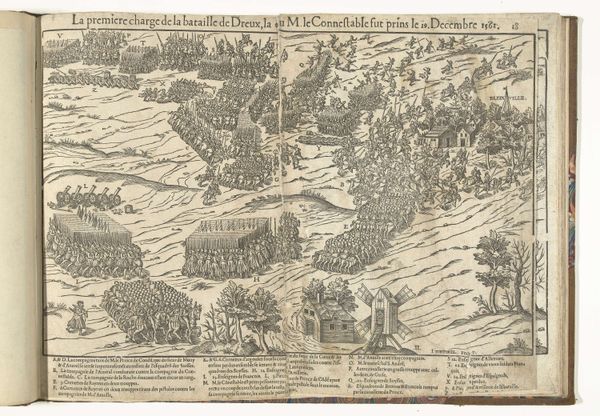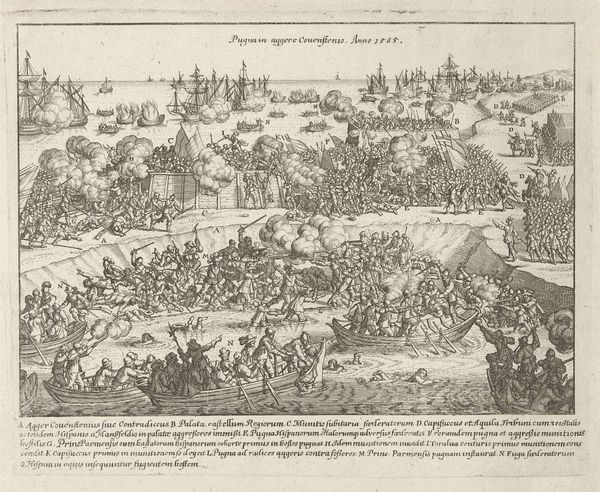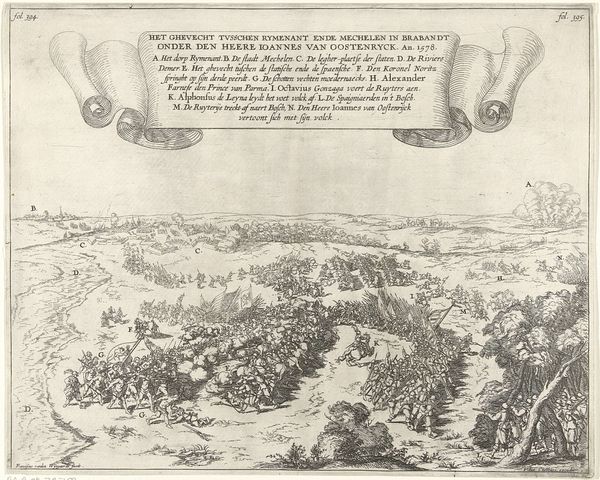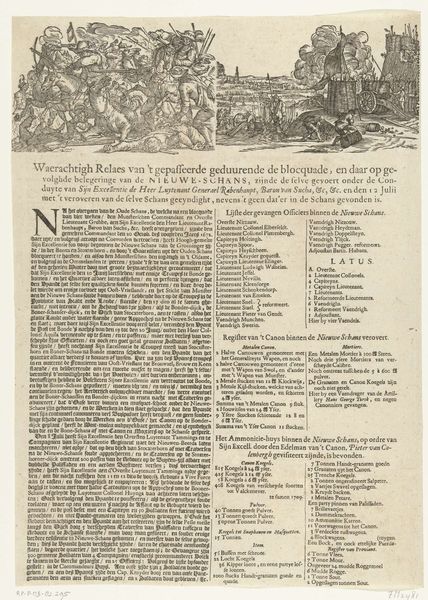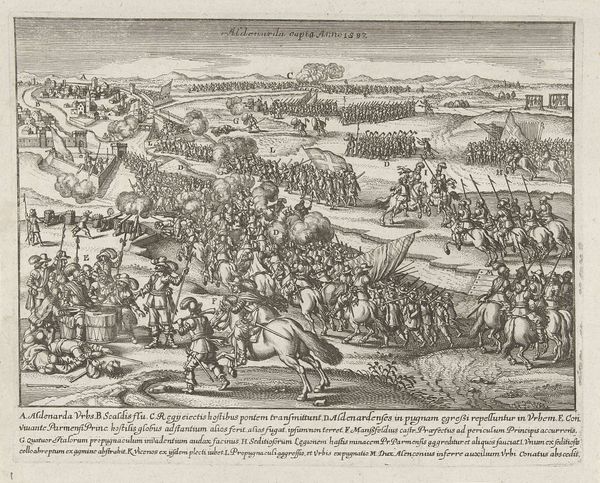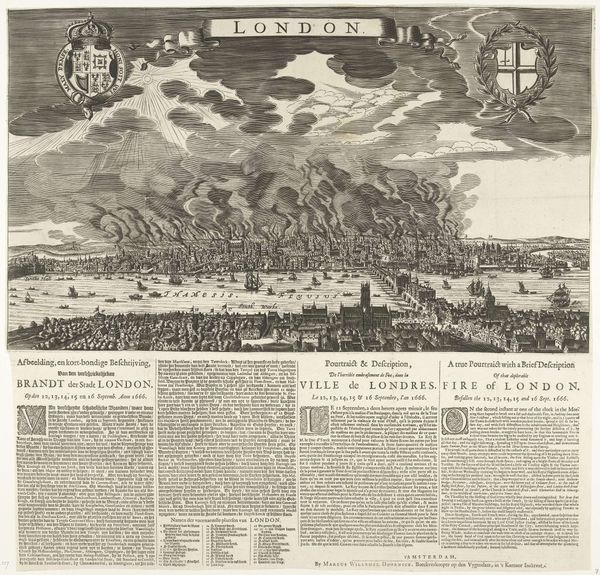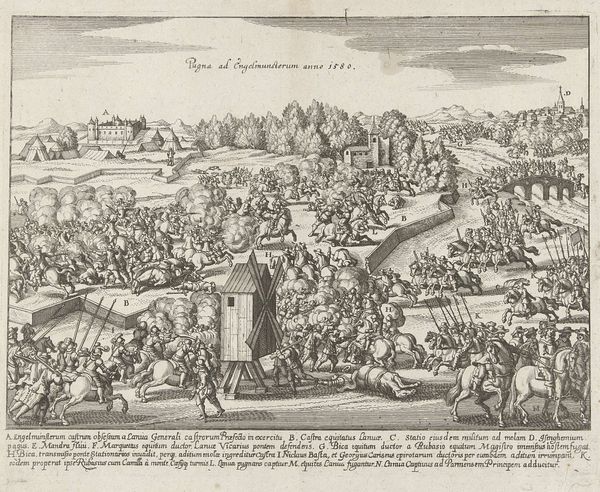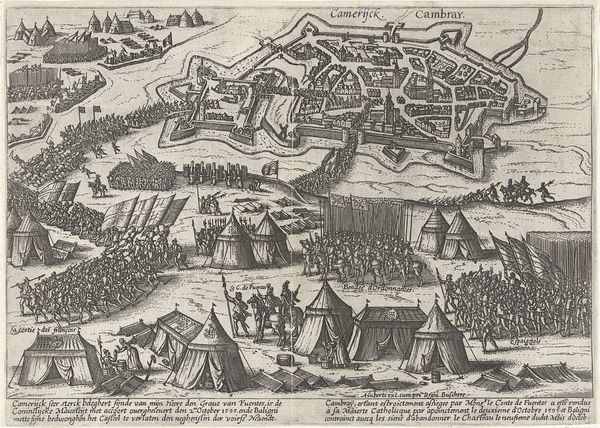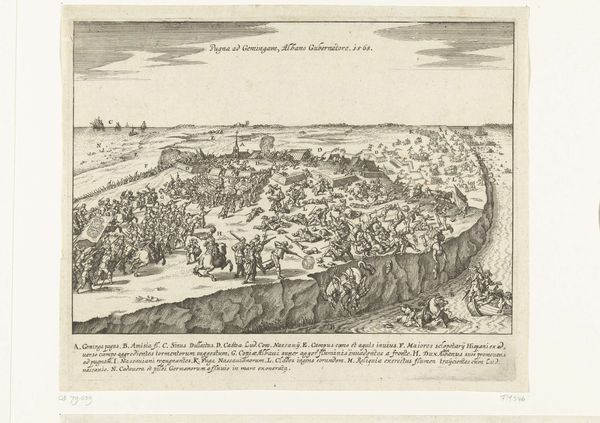
Vernietiging van de Spaanse zilvervloot door de Engelsen op de Canarische eilanden, 1657 1657
0:00
0:00
print, engraving
#
baroque
# print
#
old engraving style
#
cityscape
#
history-painting
#
engraving
Dimensions: height 393 mm, width 300 mm
Copyright: Rijks Museum: Open Domain
Curator: This print, "Destruction of the Spanish Silver Fleet by the English in the Canary Islands, 1657," immediately grabs your attention with its chaotic composition. It depicts a fierce naval battle, teeming with ships, smoke, and what I imagine is devastating firepower. I'm interested in how this work, particularly its creation as a print, might challenge our conventional ideas about what constitutes “high art”. Editor: Absolutely. The sheer amount of detail, despite being an engraving, is amazing. The ships are rendered meticulously. How was a piece like this intended to function, do you think? Was it simply to commemorate this battle? Curator: The meticulous details indeed speaks to an interesting point regarding its production. This engraving had a specific purpose and would have reached a broad public – perhaps much broader than a unique painting could at the time. It shows us the material conditions and social context surrounding its making. It speaks volumes about consumption, production, and dissemination of news. It allowed for wider circulation of imagery related to England's naval triumphs, and the simultaneous decline of Spain. Were prints such as these were, perhaps, the ‘news reels’ of their day, shaping public perceptions of global conflict? Editor: I see your point. The artist here is essentially acting as a propagandist. But does the “print” aspect make the artwork or lessen its artistic merit? Curator: Does the inherent reproducibility devalue the print form? Not necessarily, especially considering how this impacts its distribution to wider audiences than the traditional elites. How would this alter, perhaps even challenge, preconceived notions about fine art? Editor: That is fascinating! Considering the intent and impact within the cultural and historical setting shifts our perception on its relevance. It goes to show that materials and mode of production give the artwork so much meaning and value.
Comments
No comments
Be the first to comment and join the conversation on the ultimate creative platform.
